Abstract
The relative abilities of Pediococcus cerevisiae, Lactobacillus plantarum, L. brevis, and several other species of lactic acid bacteria to grow and produce acid in brined cucumbers were evaluated in pure culture fermentations. Such fermentations were made possibly by the use of two techniques, gamma radiation (0.83 to 1.00 Mrad) and hot-water blanching (66 to 80 C for 5 min), designed first to rid the cucumbers of naturally occurring, interfering, and competitive microbial groups prior to brining, followed by inoculation with the desired lactic acid bacteria. Of the nine species tested, strains of the three common to cucumber fermentations, P. cerevisiae, L. plantarum, and L. brevis, grew to the highest populations, and produced the highest levels of brine acidity and the lowest pH values in fermentations at 5.4 to 5.6% NaCl by weight; also, their sequence of active development in fermentations, with the use of a three-species mixture for inoculation, was in the species order just named. This sequence of occurrence was similar to that estimated by others for natural fermentations. The rates of growth and acid production in fermentations with a mixture of P. cerevisiae, L. plantarum, and L. brevis increased as the incubation temperature was increased from 21 to 27 to 32 C; however, the maximal populations and acidities attained were essentially the same for fermentations at each temperature. Further, these same three species were found to be the most salt tolerant of those tested; their upper limit for appreciable growth and measurable acid production was about 8% salt, whereas thermophilic species such as L. thermophilus, L. lactis, L. helveticus, L. fermenti, and L. delbrueckii exhibited a much lower salt tolerance, ranging from about 2.5 to 4.0%. However, certain strains of L. delbrueckii grew very rapidly in cucumbers brined at 2.5 to 3.0% salt, and produced sufficient acid in about 30 hr at 48 C to reduce the brine pH from above 7.0 to below 4.0. An inexpensive, pure culture fermentor which was suitable for gamma radiation, resistant to salt and acid, and which permitted repeated aseptic sampling of the fermenting brine, is illustrated and the specifications are given.
Full text
PDF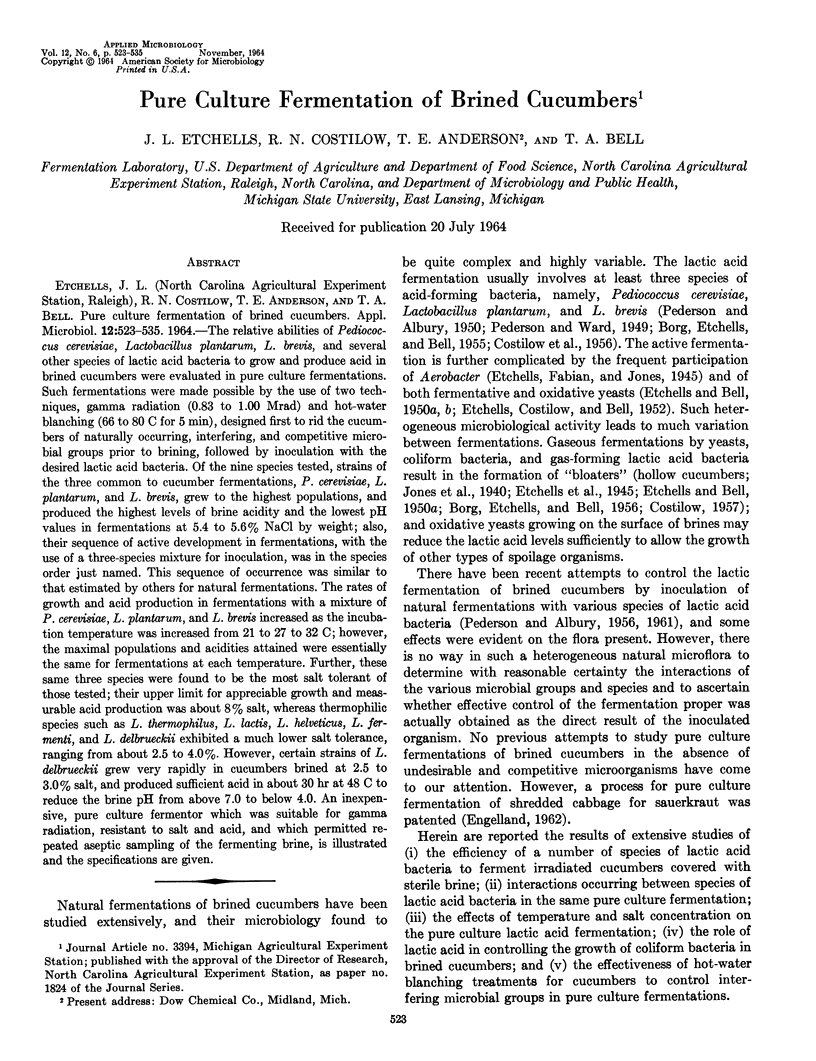
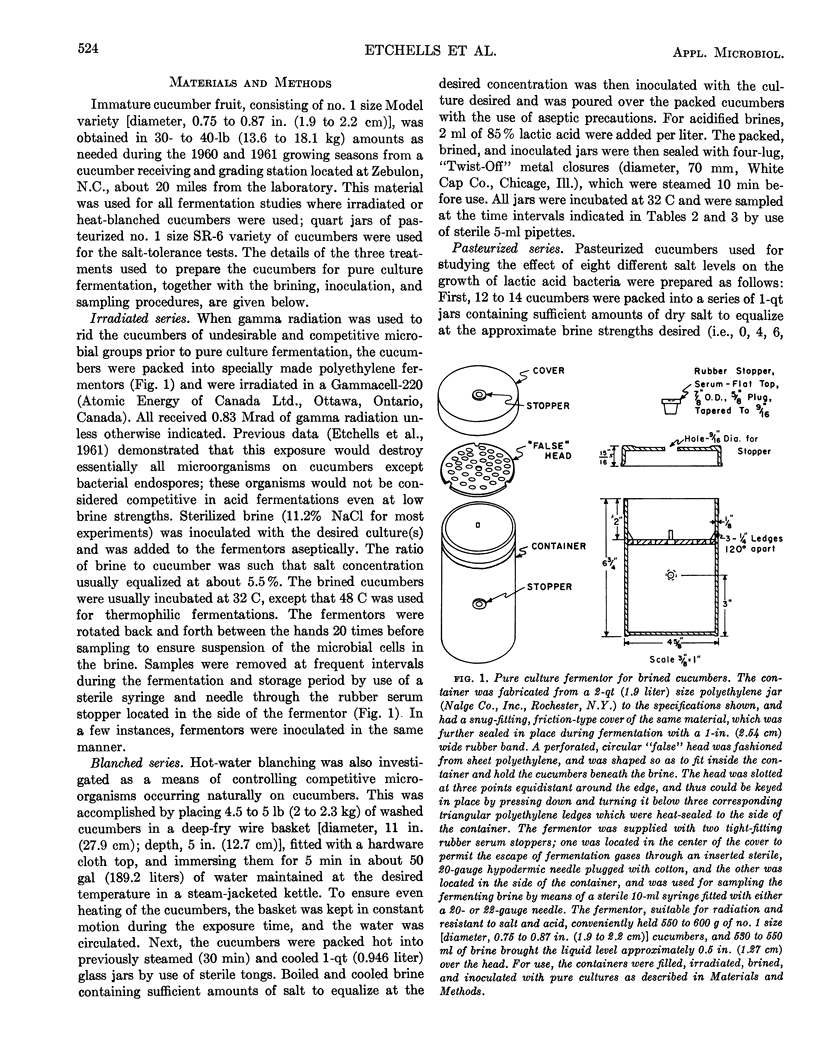
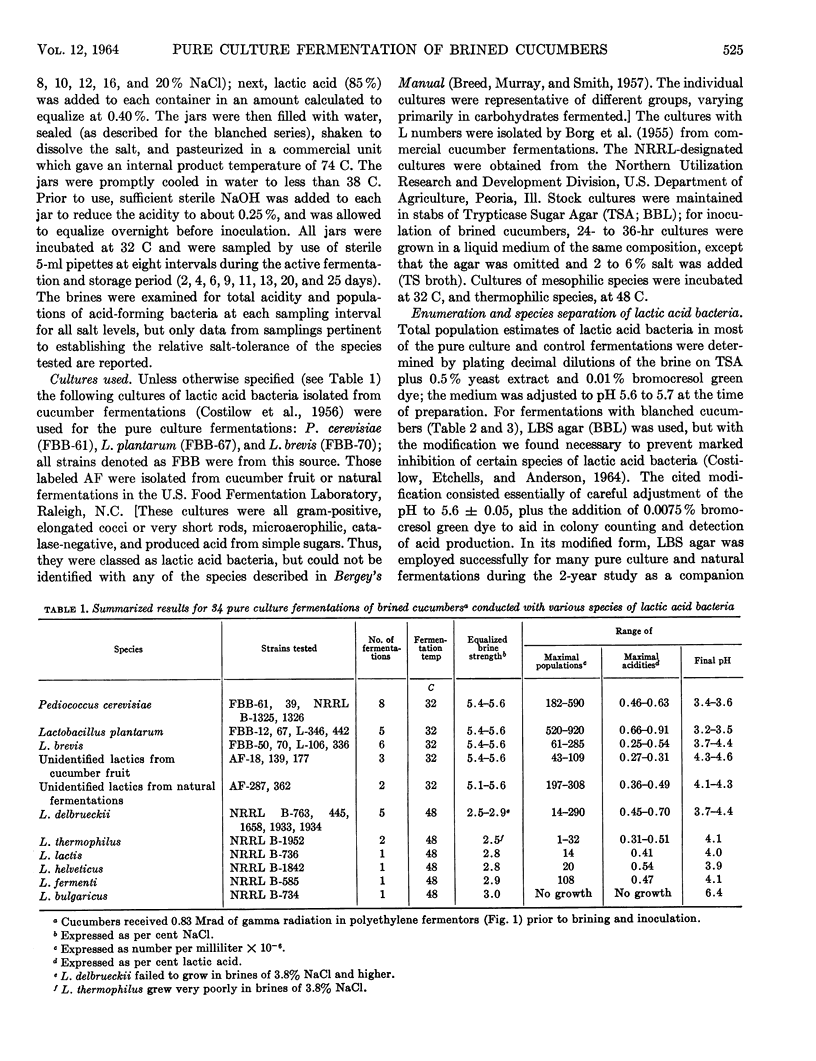
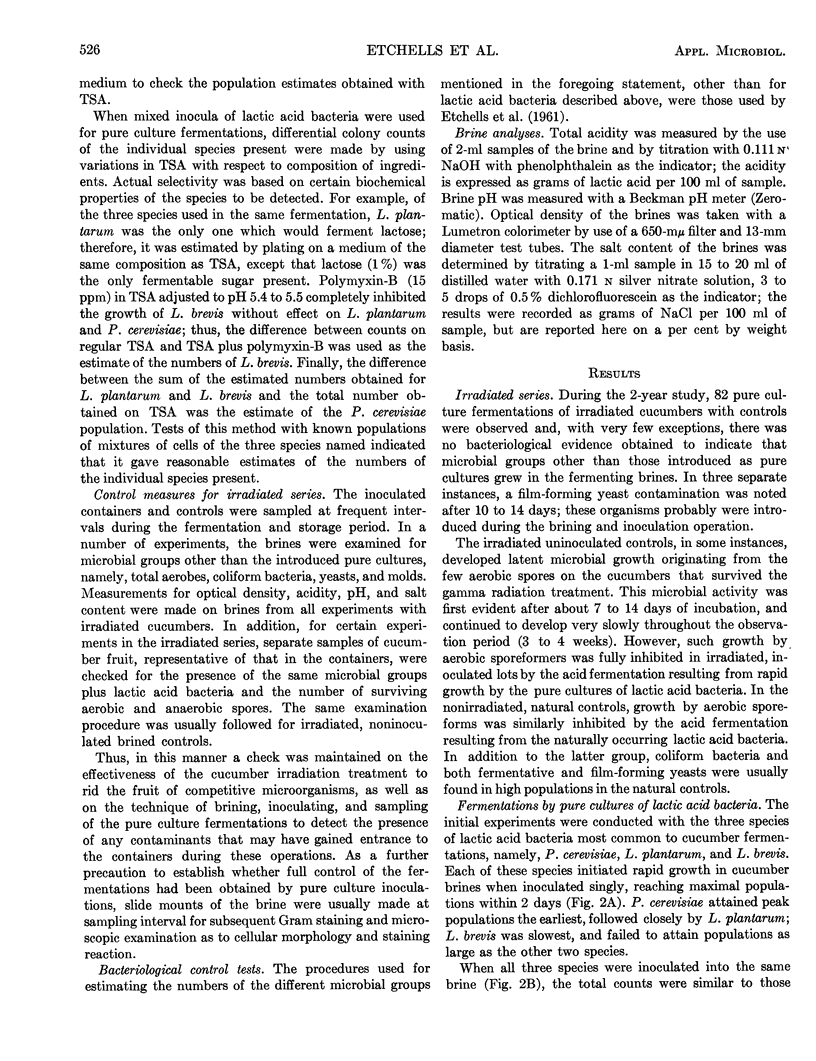
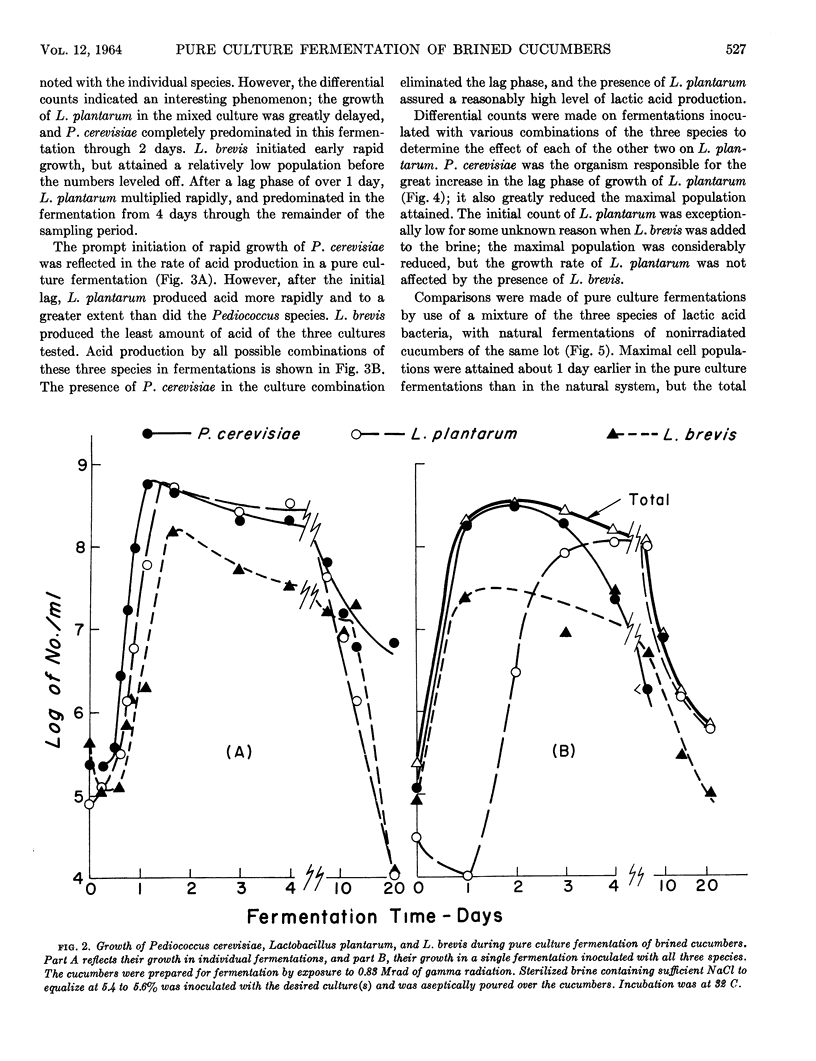
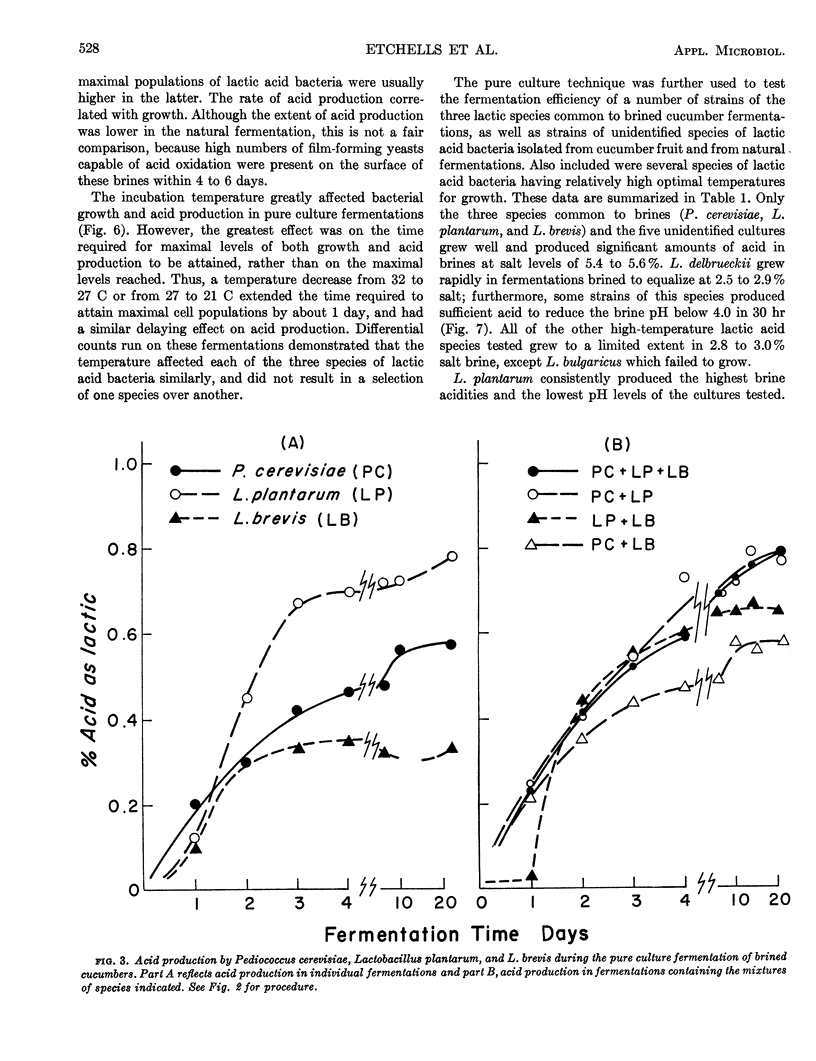
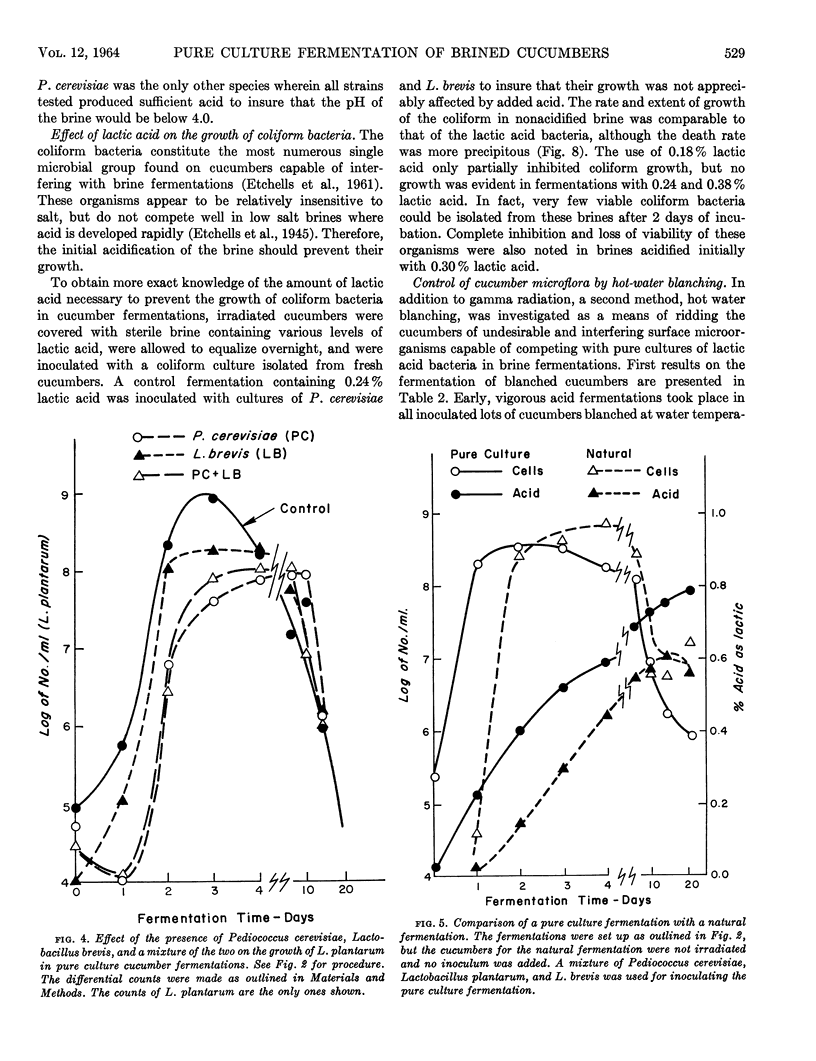
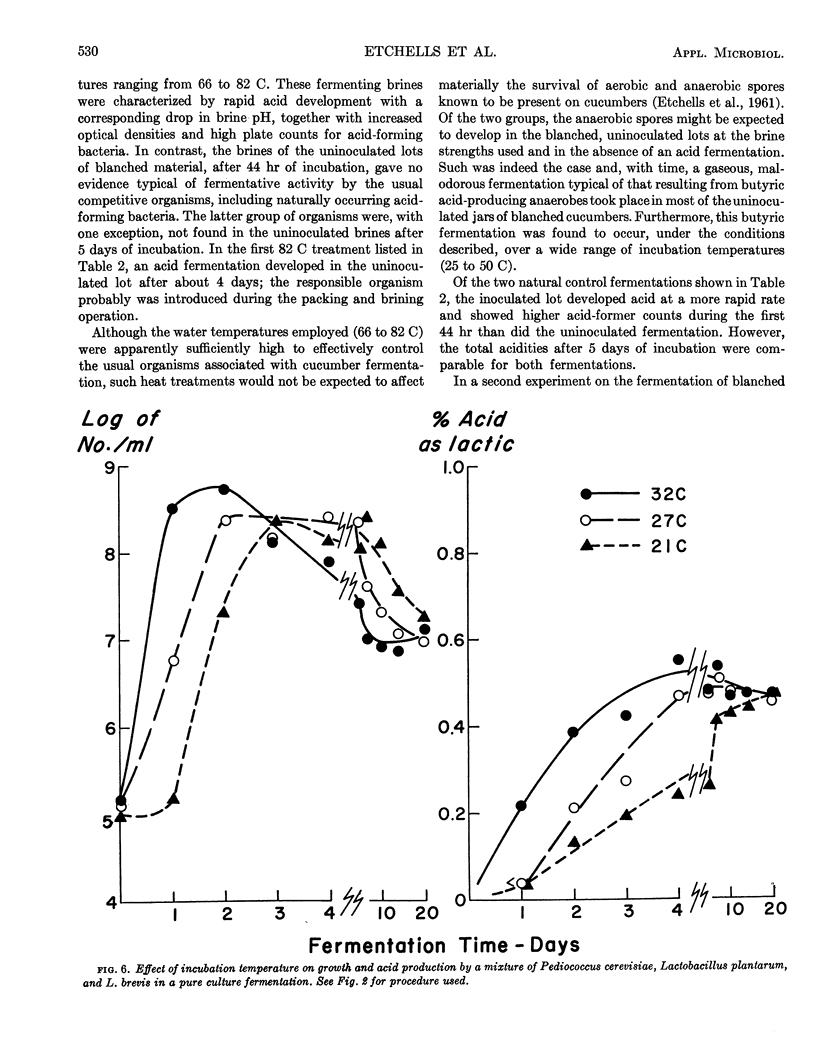
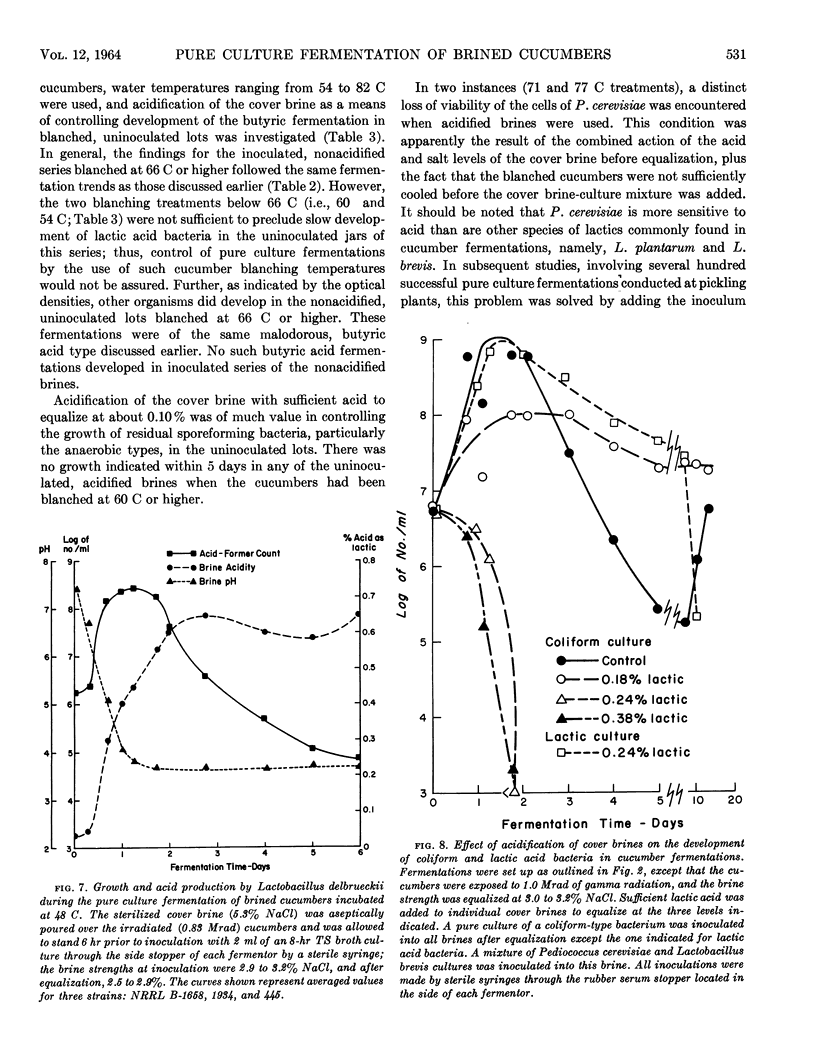
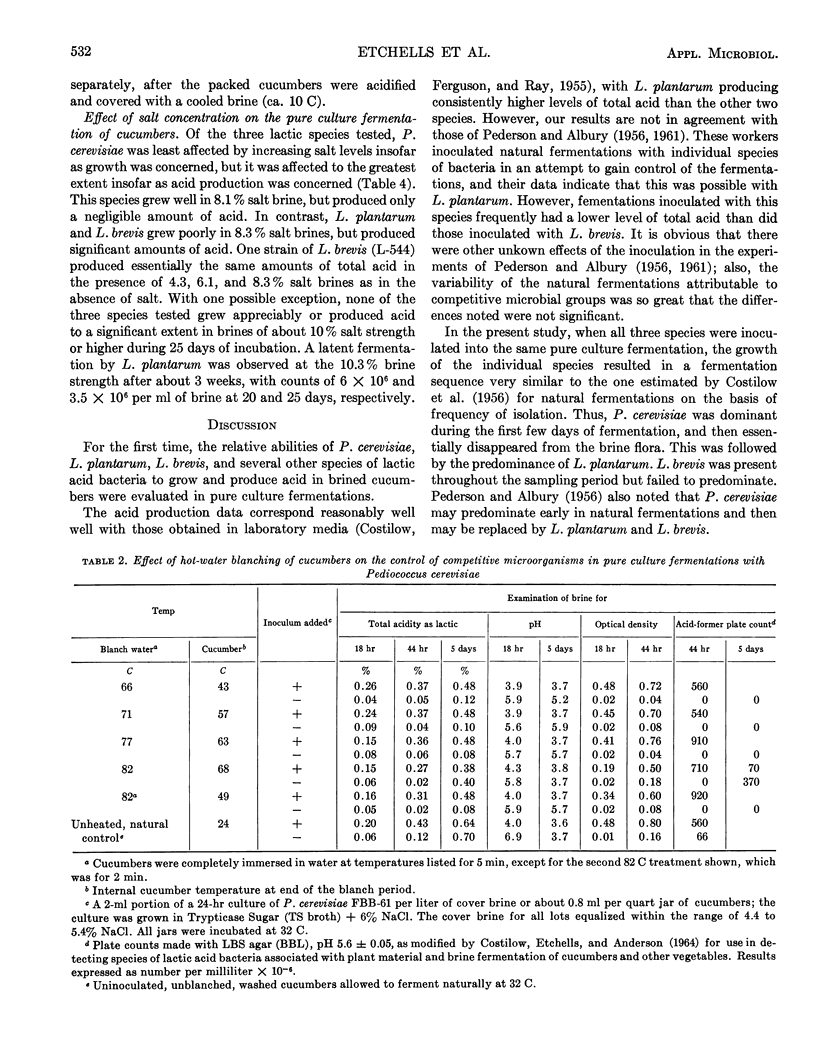
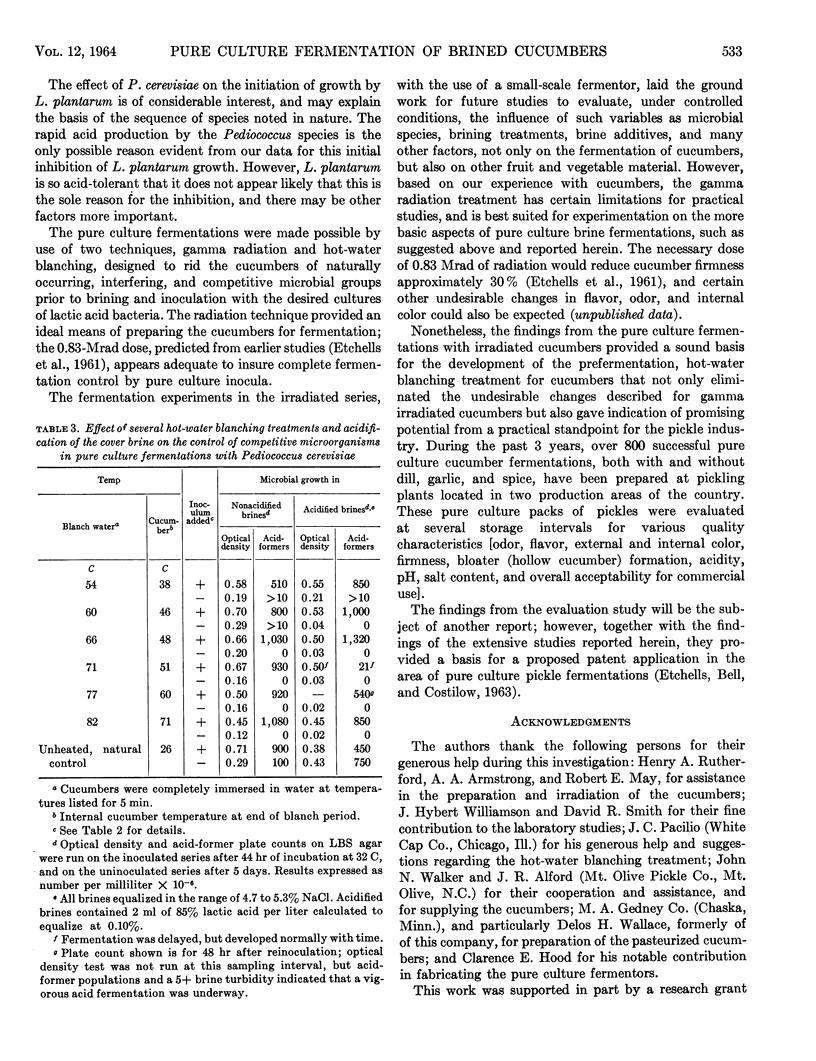
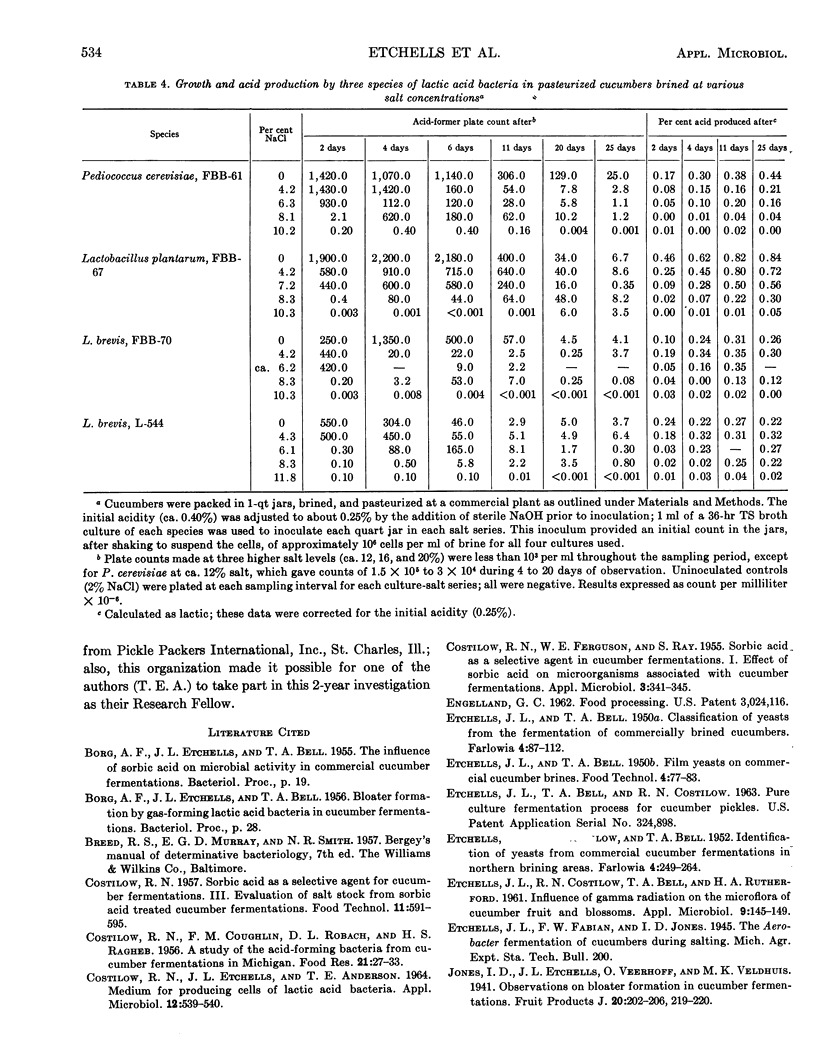

Selected References
These references are in PubMed. This may not be the complete list of references from this article.
- ALBURY M. N., PEDERSON C. S. Variations in bacterial flora of low salt cucumber brines. Appl Microbiol. 1956 Sep;4(5):259–263. doi: 10.1128/am.4.5.259-263.1956. [DOI] [PMC free article] [PubMed] [Google Scholar]
- COSTILOW R. N., ETCHELLS J. L., ANDERSON T. E. MEDIUM FOR PRODUCING CELLS OF LACTIC ACID BACTERIA. Appl Microbiol. 1964 Nov;12:539–540. doi: 10.1128/am.12.6.539-540.1964. [DOI] [PMC free article] [PubMed] [Google Scholar]
- COSTILOW R. N., FERGUSON W. E., RAY S. Sorbic acid as a selective agent in cucumber fermentations. I. Effect of sorbic acid on microorganisms associated with cucumber fermentations. Appl Microbiol. 1955 Nov;3(6):341–345. doi: 10.1128/am.3.6.341-345.1955. [DOI] [PMC free article] [PubMed] [Google Scholar]
- ETCHELLS J. L., COSTILOW R. N., BELL T. A., RUTHERFORD H. A. Influence of gamma radiations on the microflora of cucumber fruit and blossoms. Appl Microbiol. 1961 Mar;9:145–149. doi: 10.1128/am.9.2.145-149.1961. [DOI] [PMC free article] [PubMed] [Google Scholar]


